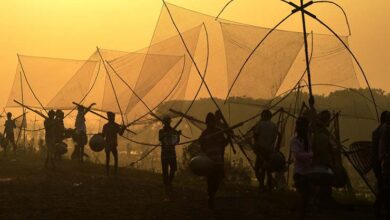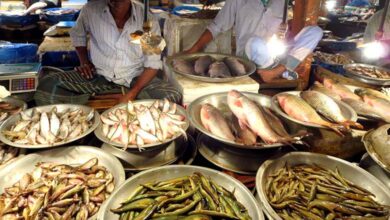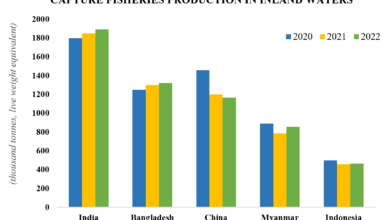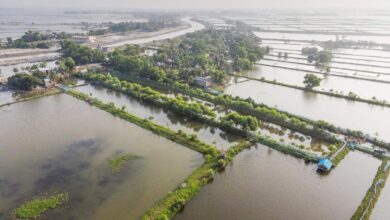It is imperative to conserve fish biodiversity of Hakaluki Haor

Hakaluki Haor, the biggest freshwater wetland in the nation, is well-known for its profusion of fish and native aquatic vegetation. Hakaluki Haor has an area of 18,115 hectares. Haor is distributed over the upazilas of Fenchuganj and Golapganj in the Sylhet district and Baralekha, Juri, and Kulaura in the Moulvibazar district.
In Hakaluki Haor, there are around 150 kinds of freshwater fish, 120 species of aquatic plants, and 20 species of reptiles. Every winter, over 200 uncommon migrating bird species congregate here. Hakaluki Haor is an excellent resource for the growth of the tourist sector, sustainable development, and biodiversity preservation.
Out of 281 bills of Hakaluki Hawr, 233 bills have been fully and partially filled, according to the Perspective-2009 survey. On an area of around 18,000 hectares, Hakaluki Haor produces about 15,000 tons of fish annually. In the Haor region of Moulvibazar, around half of its output occurs. But recent year, there are comparatively less fish being captured in Haor. According to those in the know, the filling of Haor’s bill, the bill’s dehydration, and the absence of permanent shelter are all contributing factors to the fishery’s progressive decline in production. They are also expressing concern over the start of the year’s decline in fish capture. The amount of water in the bills is diminishing as a result of decreased rainfall brought on by climate change. Fisheries and biodiversity in Haor are quickly diminishing as a result of the filling of Haor’s bill, the bill’s dehydration, and the absence of permanent shelter, inadequate planning, and inadequate management.
In order to preserve the fisheries and biodiversity of the ecologically vulnerable Hakaluki Haor as a permanent sanctuary, the government passed eighteen measures in 2010 and 2011. Eight of these bills remain as of right now, out of the eighteen that were deemed asylum cases. These eight Abhayashram Bills cover a mere 160 hectares. Koyarkona, Maiajuri, Nimu, Tekuni, Tolar, Agdar, Maichla Dak, and Kangli Gobar Kuri Bill are all permanent fish sanctuaries. Just 160 hectares of the 4,000 hectare Bill of Haor provide extremely inadequate cover. Through a revenue sector project, the Department of Fisheries has finished the sanctuary’s fisheries conservation program in last year. The shelters’ tough reputation has altered as a result.
Fish production and aquatic life diversity in Hakaluki will rise if appropriate measures are taken to excavate these fish sanctuaries, expand the number of sanctuaries, and safeguard the sanctuaries. Additionally, fishermen should be encouraged to refrain from taking fish in Haor entirely during the fish breeding season for a set amount of time. In the same manner that government departments collaborate to safeguard the Hilsa, they should also collaborate to safeguard the Haor. Only then will Hakaluki Haor be spared, and the lives of thousands of people living along the Haor will be improved.
Farhana Islam
Agriculturist, Researcher
Fisheries Resource Management, CVASU




